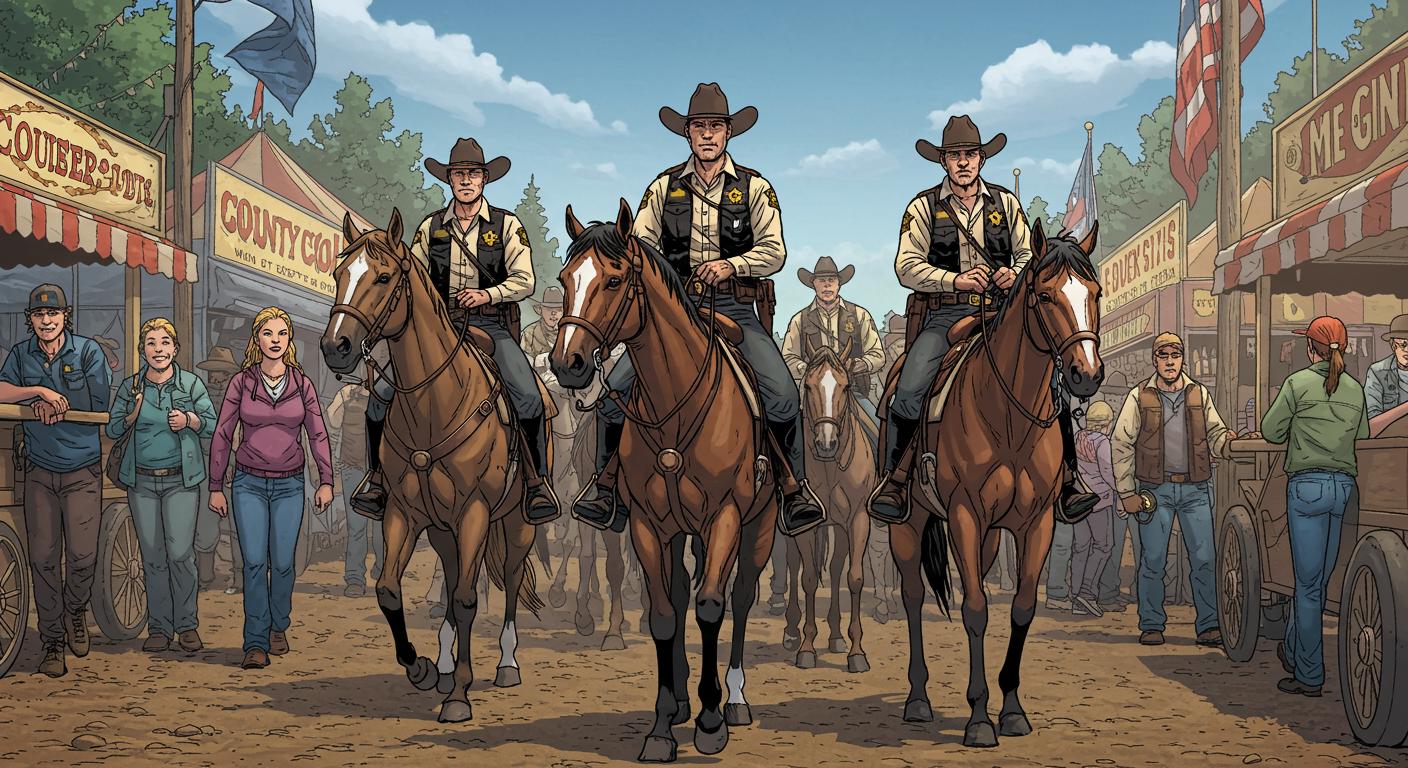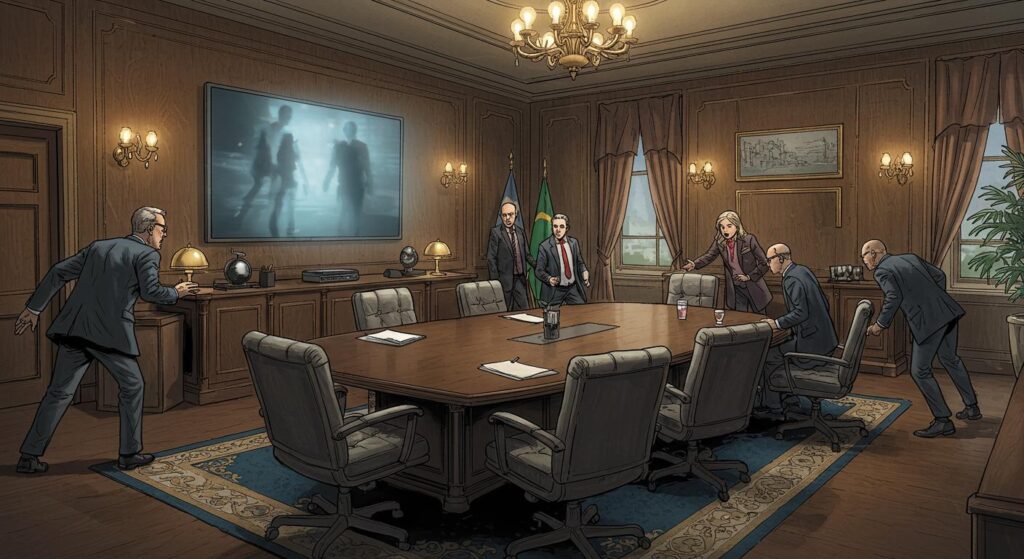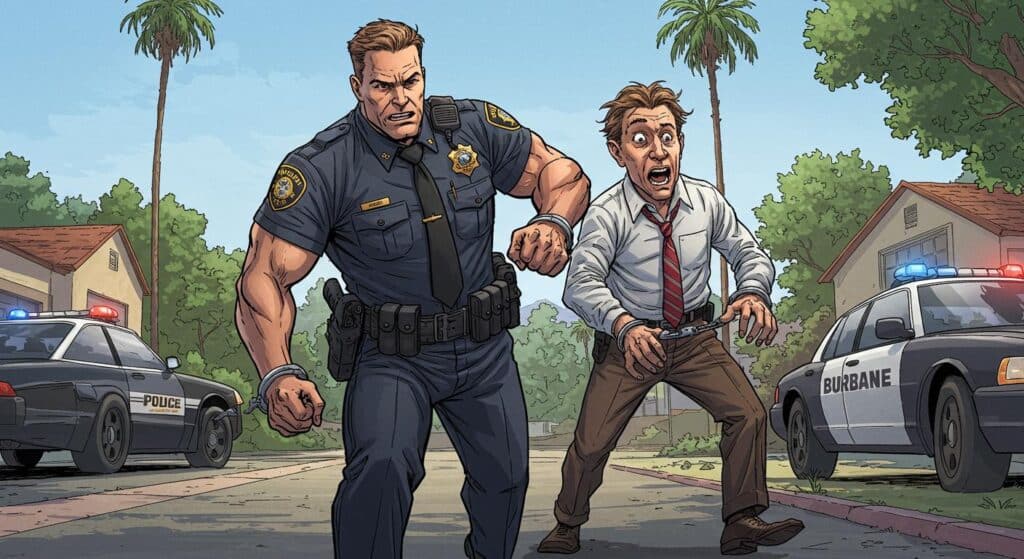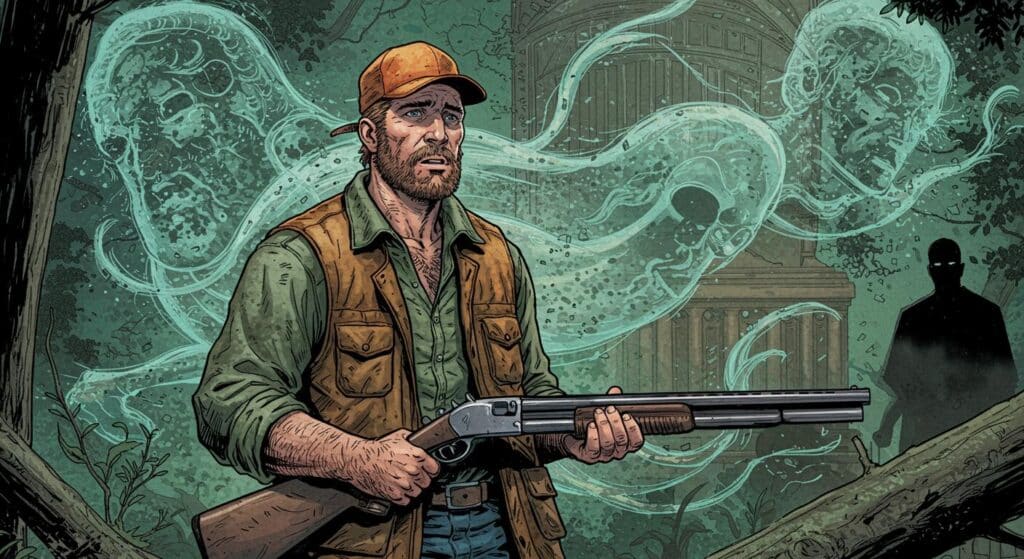Let’s set the scene: the Lane County Fair, Oregon—packed with funnel cakes, livestock competitions, and, apparently, a group of volunteer sheriff’s deputies channeling their inner cowboys. Hats? Yes. Spurs? Naturally. Sidearms? That, too. It sounds less like your standard small-town fair security detail and more like an ambitious cosplay meetup. But as outlined in a detailed report from The Oregonian/OregonLive, the playful aesthetic gave way to a real-life drama that now sits at the center of a federal lawsuit—complete with a foot chase, mistaken identity, and, allegedly, an approach to policing more rooted in the 1880s than the 2020s.
Cowboys on Patrol (and in Court)
The current controversy traces back to a summer night in 2023, when Keviante “Kev” Hill, a 20-year-old Black man from Portland, was confronted at the fair by members of the Lane County Sheriff’s Mounted Posse and private security personnel. Legal filings and police records highlighted by The Oregonian/OregonLive reveal that while deputies were seeking a shooting suspect described as a white man in a red hat, Hill was singled out and approached, despite sharing no resemblance with the actual suspect except that both had been connected, somewhat tenuously, to a group that included a Black man and two white men.
In a scene that can only be described as inadvertently cinematic, a posse member approached Hill (without announcing his authority or intent), reached for his arm, and, according to the lawsuit, caused Hill to flee the fairground. Eyewitness video, reviewed by Hill’s lawyers and referenced in the report, shows security and posse members—decked out in cowboy hats and sporting pistols—chasing Hill over a fence, down neighboring streets, and eventually tackling him in a church parking lot. At the time, Hill was suffering from an asthma attack. For anyone wondering if this was all part of some elaborate reenactment, police reports cited in the article confirm that Hill had no weapon on him.
Notably, dispatch communications relayed by The Oregonian/OregonLive indicate that law enforcement was informed within moments that Hill was not a shooting suspect and, in fact, might have been the victim from the previous evening’s incident. Yet, despite such real-time clarifications, the chase and subsequent detainment went on unabated. The deputies also documented their reasoning—including observing what they described as Hill’s “non-normal gait” and his choice of clothing—as indications that he might be carrying a weapon.
After tackling Hill and photographing him (even while bystanders questioned the necessity), the posse and a security guard told him he was “trespassed” from the fair. This occurred even after Eugene police made it clear they had no interest in him, according to the witness video and written dispatch logs.
Echoes of the Old West (and the Old Playbook)
By way of background, the Lane County Sheriff’s Mounted Posse is composed of civilian volunteers, mostly without law enforcement backgrounds but sworn in as special deputies. As relayed by Sgt. Levi McKenny, the sheriff’s office liaison to the posse and cited in police reports obtained by The Oregonian/OregonLive, these volunteers have no arrest or enforcement authority, though they may carry firearms if properly licensed. At events like the county fair, the policy restricts them to crowd management and parking assistance—a far cry from hot pursuit and forcible detention.
The report further documents that the fallout was rapid. The local NAACP denounced the incident, raising concerns about “a lack of accountability” for armed civilian volunteers acting under the color of law enforcement. In a statement highlighted in the article, the organization asked pointedly how Lane County supervises and empowers such auxiliary personnel, especially those permitted to carry firearms while lacking formal policing powers. In the days and weeks after the fair, the incident triggered complaints to the Oregon Department of Justice’s bias response coordinator and caught the attention of the FBI, according to the same coverage.
The state Department of Justice’s Civil Rights Division found that a “racially motivated bias crime” had occurred in this case, although, as the outlet also notes, no in-depth follow-up investigation was conducted by the DOJ itself. The FBI confirmed it had opened an investigation, but withheld further comment on its status.
The Law, the Lasso, and the Litigation
Alleging unlawful seizure, excessive force, racial discrimination, and violation of Oregon’s bias crime law, the new lawsuit names Lane County, the sheriff’s posse, the county fair board, and a private security contractor as defendants. Defense and law enforcement spokespersons, when approached for comment, largely declined—though Sgt. Jesse Olsen confirmed to The Oregonian/OregonLive that the posse remains on the roster to help with parking at this year’s fair.
It begs the question, as put forth by the NAACP and echoed by community observers: is it advisable or even reasonable to delegate essential public safety duties to volunteers whose primary distinction may be an affinity for western dress and public service enthusiasm, but who function without the boundaries and training that define contemporary law enforcement? The line between pageantry and real policing appears particularly murky when armed civilians in period garb assume authority that outpaces both their training and their legal remit.
Costume or Consequence?
The juxtaposition here—the cowboy aesthetic, historical title, and firearm privileges with the real power to detain and confront civilians—creates an uncanny tableau where the Wild West cosplay is less harmless fun, more potential liability. When the Oregon Department of Justice finds racial bias and the FBI quietly opens a file, it’s probably time to pause and wonder if this approach to fairground security needs an update.
So, did the costumes embolden overreach? Or was this simply the natural result of loose guidelines meeting heightened adrenaline? The story, as detailed in The Oregonian/OregonLive, leaves us pondering how much of our attachment to tradition is harmless nostalgia—and how often it crosses a line into something else. Is it time for Oregon’s county fairs to hang up the spurs and revisit what it really means for volunteers to keep the peace? The answer may not be found in a themed sheriff’s badge—or, for that matter, behind a funnel cake stand.







